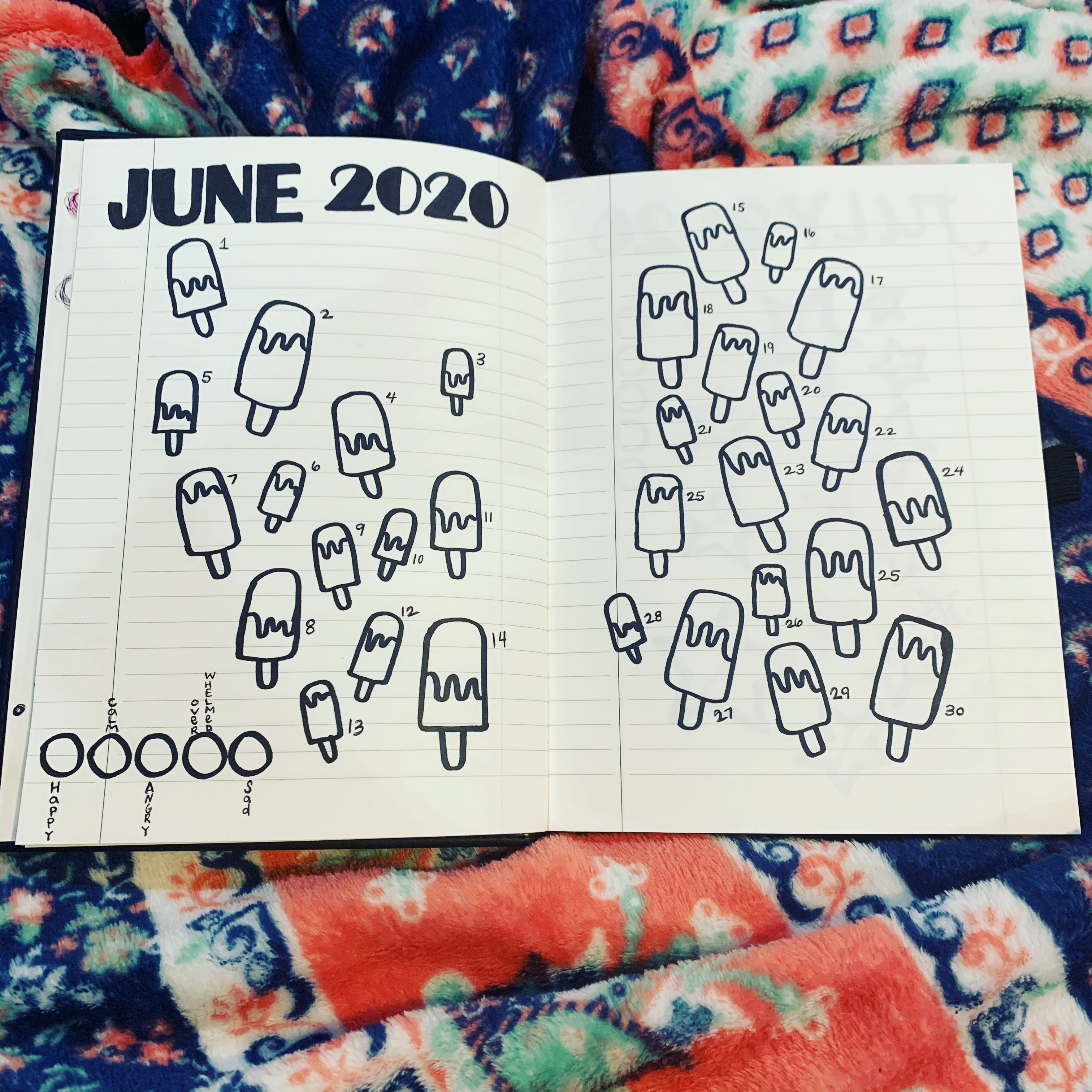That photo up top may look a little familiar, eh? That’s because it’s one of the few that I’ve posted on Instagram and Facebook to give you a visual of what my mood journal actually looks like. I even hand out freebies so you can make one for yourself. But I’ve come to realize that I haven’t exactly explained the reasoning behind me using it so I figured I owed you that.
As I’ve publicly announced in recent times (check out this post as well as the podcast for more info), I was diagnosed with Bipolar II Disorder when I was 16. For about 8+ years I struggled insanely hard with the disorder for two main reasons:
- The stigmas surrounding mental health made it hard for myself as well as people in my life to accept that I was struggling with the disorder.
- I wasn’t getting the proper help nor the support I needed in order to be able to effectively manage it at the time.
Two years ago I decided that I would no longer allow my Bipolar Disorder to control me, but instead I would learn how to take control of it. I started working very closely with my therapist as well as soaking up all of the advice from my psychiatrist. I started making an active effort to ensure that I take my medication every single day. I also learned that eating healthy as well as daily exercise would help boost my mood so I’ve actively engaged in those things as well.
One thing that my therapist has always strongly encouraged me to start doing is to write daily in a journal. This is an activity that I do engage in, although it’s been really hard for me to stick with it regularly. I tend to only grab my journal when things are really rough and while that’s definitely a great time to do some inward soul-searching, the daily practice of it is more beneficial in the long run.
So, what I’ve learned over the past two years is that when you start something new, it’s ALWAYS best to start small then work your way up once you’ve created the habit you’re looking to get set in. For me, journaling seems to take too long and I typically have a pretty busy schedule (who doesn’t?!), so I figured I’d start small with a Mood Journal! Here’s how it works:
- Each month is spread over two pages (side by side) and contains 28-31 little drawings that are themed for the month. For example, June 2020’s spread included 30 little hand-drawn popsicles using the free guide found here.
- I added a Mood Chart to the bottom left of the first page and labeled them the following: Happy, Calm, Angry, Overwhelmed and Sad. Then I shaded in one color to correspond with each of the five moods.
- I keep this journal on my nightstand and before I go to sleep every night, I shade in which moods best describe how the day went.
This literally takes 20 seconds of my time – I have NO excuse for not doing it… Right? Ha, wellllllll take a look at the picture below.

I not only forgot to chart my moods for two days in a row, but I also added one too many popsicles to my chart. Whoops! I’m human, it happens. But now that you have a great idea of how this simple chart is used, let’s discuss why I use it.
Here’s the thing with bipolar disorder – you have ups (manic episodes), downs (depressive episodes) and the steady-in-betweens. By tracking your moods, you can use them as a reference guide to look at your “past history” of mood patterns. Believe it or not, history repeats itself so much closer to home than most of us think. Facebook Memories has done a wonderful job of helping me realize this! I’ve seen statuses and photos that I posted on the exact same day but years apart where I was doing the same activity. For example, I watched the movie The Last Song on the exact same day but 4 years apart (2012 & 2016). Or I happened to be at the beach on the same exact day, five years apart (2010 & 2015).
It’s gotten weirder than that – I saw Ke$ha in concert on the exact same day in 2013 and 2018 with the SAME FRIEND. Or that one time that my Norwegian friend came to visit Texas in 2014 then came back for a last minute trip during the exact same week in 2019… Y’all, I can’t make this stuff up!!! And if history repeats itself in this form, I betcha my moods will show a similar pattern as well.
By tracking my moods on a daily basis, I can use this journal as a reference point to find trends in my depressive episodes. I have a gut feeling that I tend to start slipping into depressive “lows” around the same time each year and if I can figure out when, I can do the necessary work to stop them from coming for me. ‘Cause I don’t know about you, but I hate feeling sad! And if I can do something to stop some of my sadness, I sure as hell will!
I hope that my explanation not only made perfect sense but also has now inspired you to do the same. Life is way too short to spend it feeling blue. 😉 Click here to sign up to receive monthly freebies to guide you step-by-step to making your own Mood Journal.

